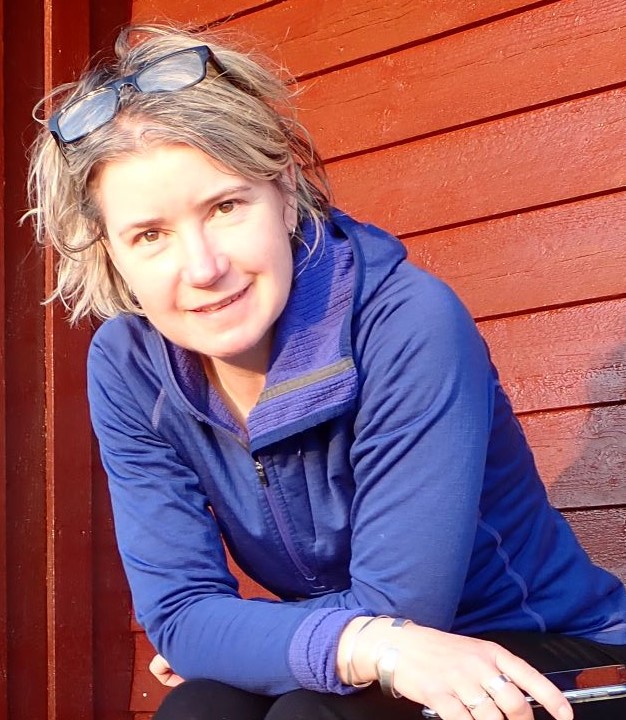Bringing history to bear on contemporary problems.
Dr Deborah Long makes connections between specialists and policy makers, prehistoric landscapes and today’s policy. “I bring the long eye of history and the distance of the horizon to bear on policy development, focusing on how to use policy to build resilience among Scotland’s habitats and species, and thus build a future for Scotland’s nature and people,” she says.
Journey from there to here
An enthusiastic mud pie maker as a child, Deborah studied geography before completing her PhD as a palaeoecologist. As a PhD student, she collected peat and soil cores from the Peak District, analysing their fossilised pollen contents to infer the landscape history of Bronze Age field systems. “This is where my landscape approach to conservation started,” Deborah says, “Understanding how landscapes work and change over long periods of time, how and why we end up with our landscapes today.”
She developed this approach further at Kilmartin, Argyll and Bute, where as Curator and Programme Manager at Kilmartin House Museum, she used science and arts to understand and visualise Kilmartin’s prehistoric landscapes. It is this palaeoecological approach to landscape scale change over millennia that most informs her work today.
Working at scale
“Ecology works at scale – policy often does not,” Deborah explains. Bridging this gap is what informs and inspires her work. Using perspectives rooted in prehistory and underpinned with deep geographical knowledge, her key interest is to bring an ecologically effective temporal and geographic scale into policy development. This often means demonstrating how incremental landscape scale change has led to the drivers of biodiversity loss that we see in Scotland today. And it means working out and demonstrating the necessary actions on the ground for policy decisions to support, drive, and reverse those drivers and increase ecosystem and ecological resilience. “This is not a quick process,” she emphasises. Farmland policy and woodland policy reports from 2013 and 2011 respectively still underpin the approach needed today.
“Embedding actions to develop effective policy that builds functioning ecosystems at scale across Scotland is the key to the nature and climate crisis,” Deborah says. A good example of this is the work she led, while Head of Plantlife Scotland, in Important Plant Areas. Mapping these, and developing guidance on how to manage, preserve and restore them, illustrates perfectly the approach that she advocates.

The importance of networks to achieve change
Central to this ecological resilience, and building that through effective policy, is the concept of connectivity. “Although the concept of ecological connectivity has been around in Scottish policymaking for well over a decade, it still has to gain sufficient traction before we see results,” Deborah says. Yet these results are needed within the next few years. Tackling this conundrum head on is where nature networks come in. Using examples from the past is also instructive: for example, research she led to find out how twinflower is pollinated and what conditions its pollinators require to thrive is now informing twinflower conservation in the Cairngorms.
Social networks are also key, however, and Deborah’s experience in building and facilitating effective networks is key to successful policy underpinned by science and expertise. For example, the GROW Observatory, based at the University of Dundee, was a multi-partner international consortium working with citizens, climate and soil scientists, and policymakers across Europe to gather, share and use data on soil and land management. Today, Deborah leads Scotland’s environmental NGO network, Scottish Environment LINK, where organisations work together to build a sustainable Scotland with healthy nature, healthy people and healthy communities.
Why Scotland?
“Go for a walk in the Scottish Highlands and you’ll experience for yourself prehistoric landscapes butting up against mountain paths, high glens and along the coast,” Deborah enthuses. “History feels very present in Scotland’s landscapes, and appreciating the importance of the past to today’s landscape is easy. Easy too is the appreciation of geographic scale: the vistas from Scotland’s mountain tops, on a clear day, take in a multitude of habitat types. Walk from west to east across Scotland and you move from an oceanic rainforest landscape to a continental alpine one. Geographically and historically, Scotland has it all. If using geography and prehistory to explain the present, you need to be in Scotland.” Translating that into policy is Deborah’s key focus.
Dr Deborah Long is Chief Officer at Scottish Environment LINK. Her role is to build and deliver a strong coherent voice in pursuit of a sustainable Scotland, providing leadership and enabling LINK members to take effective action together. She is a trustee of the Royal Zoological Society of Scotland, the Environmental Rights Centre for Scotland, the Association for Chief Officers of Scottish Voluntary Organisations and Bright Green Nature, a new environmental NGO in the Scottish Borders. She is also a Director of the ARCH network, providing training and peer learning between conservation experts in Scotland and across Europe. Find out more here.
This post is part of a series showcasing Scotland’s innovative, high-impact research supporting biodiversity conservation, in partnership with Scottish Government and NatureScot. Read the rest of the series here.
Further reading
Find blogs from Deborah at LINK Thinks and here at Valuing wild plants
Scotland and the UN Decade of Ecosystem Restoration: 5 priorities for the coming year (2022): https://www.scotlink.org/scotland-and-the-un-decade-of-ecosystem-restoration-5-priorities-for-the-coming-year/
Land and people in Scotland: the new Cairngorms National park Plan (2022): https://www.scotlink.org/land-and-people-in-scotland-the-new-cairngorms-national-park-plan/ Nature based solutions and the future we want. The Geographer, Special Edition 2021 RSGS. https://www.rsgs.org/Handlers/Download.ashx?IDMF=784a04d2-a865-4d51-b6b4-281cd795b284
